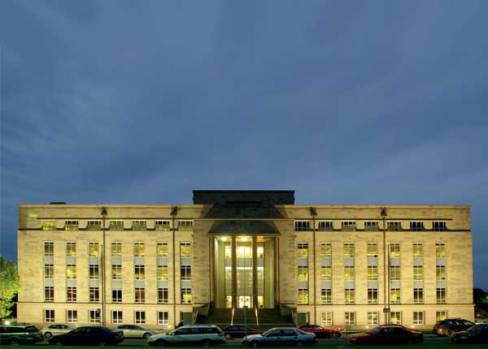By Julian Bajkowski
Federal Treasurer Wayne Swan has delivered a Budget crowned by a gaping $18 billion deficit and underpinned by future “responsible, targeted” savings projections of $43 billion to be delivered by Finance Minister Penny Wong in what could become a largely decorative set of numbers following the federal election in just four-months.
After promising to maintain a surplus a year ago which most economists dismissed as impossible and unnecessary, the latest set of numbers handed down by the Treasurer tonight has laid bare the magnitude of structural challenges to the Australian tax base that will haunt this government and the next.
“Let’s be clear about the magnitude of the hit to revenue. This year we saw the second biggest revenue writedown since the Great Depression,” Mr Swan said in his Budget speech.
“Since last year’s Budget, expected expected tax receipts for 2012-13 have been written down by $17 billion,: Mr Swan said. “And since our mid-year update in October, there has been a total revenue writedown of over $60 billion over the next four years.”
Mr Swan said that company taxes, capital gains tax and resource rent taxes had all been hit.
“We’ve seen almost $170 billion in tax receipts wiped off our tax receipts since the GFC,” the Treasurer said.
Peter Costello’s fertility subsidy, the Baby Bonus, has been axed and a raft of measures to tighten tax loopholes and aggressive tax minimisation practices used by multinational companies in Australia have been put forward in an effort to get companies like Google and Apple to finally cough-up while at the same time stemming further revenue leakage in the future.
The new tax crackdown is slated to plump $4 billion over the forward estimates period and target “tax structures that seek to shift profits by artificially loading debt into Australia.
The Australian Taxation Office will be handed $109 million over four years “for additional resources for compliance activity focussed on business restructuring practices, including marketing hubs that that facilitate profit shifting.”
Welfare recipients will also be more heavily scrutinised with data matching between the Department of Human Services and the Australian Taxation Office against PAYG payment summaries earmarked to generate more than $67 in savings – a relatively small sum and an indication that existing cross-matching measures are both effective and mature.
Public Service cuts spared for hard sweat
However at the Gillard government has – at least at first blush – firmly resisted taking a chainsaw to federal public service jobs, education programs and social service in an effort to extract ‘big number’ savings that could potentially push the deficit down a notch or two.
The eschewing of mass redundancies in the public service – like those typified by incoming Queensland and New South Wales state governments – will likely act to support consumer and business confidence to a degree, but also creates a trapdoor in electoral popularity for whoever may be required to trim numbers in the future.
The scale and often ham-fisted execution of Queensland’s public sector cuts have been far more unpopular than anticipated by the Campbell Newman government and reinvigorated public sector unions there just months after Labor was sent packing from office in a landslide victory for the Liberal National Party.
Small change shakedown
If small change adds up, Penny Wong and Wayne Swan have left few stones unturned to try and squeeze better value and efficiencies out of Canberra’s bureaucrats.
Under the title of “A more efficient Australian Public Service” around $600 million in savings will be extracted from the bureaucracy, a relatively modest figure given that previous reforms like the unpopular, uninspiring and quickly outdated Gershon Review yielded $1 billion in savings.
Senior public servants in the Senior Executive Service and Executive Level Bands 1 and 2 will sweated hard and forced to deliver-up $14.4 million “through better management of staff numbers” and “more sustainable management structures.”
Finance also has also taken a highly literal interpretation of ‘tightening’ and will squeeze out $63.8 million by compressing the Orwellian sounding “property occupational density target.”
In plain English that means public servants will become closer and get to know each other much better by a reduction in amount of floor space per worker for all new government office leases with the “density target” pushed from 16sqm to 14sqm.
Suppliers to government will also feel the surgical steel through $151.8 million in procurement changes that “will result in better price outcomes for agencies through an expansion of AusTender and standard terms and conditions for procurements contracts under $200.”
Less specific are “around $300 million” that are earmarked to come from “internal efficiencies found by a number of departments” including streamlining administrative functions (sweating) and continuing to make better use of “consultancies and travel services.”
Getting to work in the Parliamentary Triangle is also about to become far more expensive for many Canberrans. A whopping $73 million in revenue over three years extracted from the imposition of “paid parking on National Land” in the elite bureaucratic havens of Barton, Parkes, Acton and Russell.
That means commuters from Treasury, Foreign Affairs, Prime Minister and Cabinet, Australian Federal Police, Department of Broadband, Communications and the Digital Economy and many, many more agencies will have to dig deeper into their pay packets to get a park in a city where spartan public transport services have long been regarded as a token gesture rather than real infrastructure.
The push to impose parking fees is certain to create added pressure for Canberra’s bus services and leaves open the distinct possibility of an accusation of cost-shifting being levelled against Finance from the ACT government that could have to absorb thousands of new refugee bus patrons.
Systems upgrades for Human Services
Nothing in government generates big saving or big blowouts better than information technology and there is plenty of movement in social welfare management systems at the Department of Human Services.
According to a statement from Human Services Minister, Jan McLucas, a review of Centrelink’s “main IT system” will be undertaken throwing into question the future of its longstanding, mainframe core system that is based on the highly specialised Model 204 architecture.
While the 204 system has essentially operated without any major hiccups since its installation, it has remained a prime target for multinational enterprise IT companies like SAP, IBM, Oracle and Microsoft that stand to make hundreds of millions from an upgrade that would be close to the size and complexity of the Commonwealth Bank’s $1.1 billion core systems overhaul.
Ms McLucas said $16.2 million would be “invested to develop a business case on the future of Centrelink’s Income Security Integrated System” that sees “half a billion dollars of deposited into the bank accounts of Australian every working day.”
The risks associated with any shortcomings of an overhaul of Centrelink’s systems are enormous because payments to millions of welfare recipients, including pensioners and financially vulnerable people, could potentially be disrupted if a new system malfunctions – a situation that would put a Cabinet minister’s head on the block.
Human Service will also spend $102 million over five years to upgrade to its child support IT system to increase capacity and “to support the both the current and changing needs of Australian parents.”
Centrelink call centres, that also provide emergency and special event hotline services to other agencies, will also get an injection of $30 million.
More to follow…
Comment below to have your say on this story.
If you have a news story or tip-off, get in touch at editorial@governmentnews.com.au.
Sign up to the Government News newsletter




